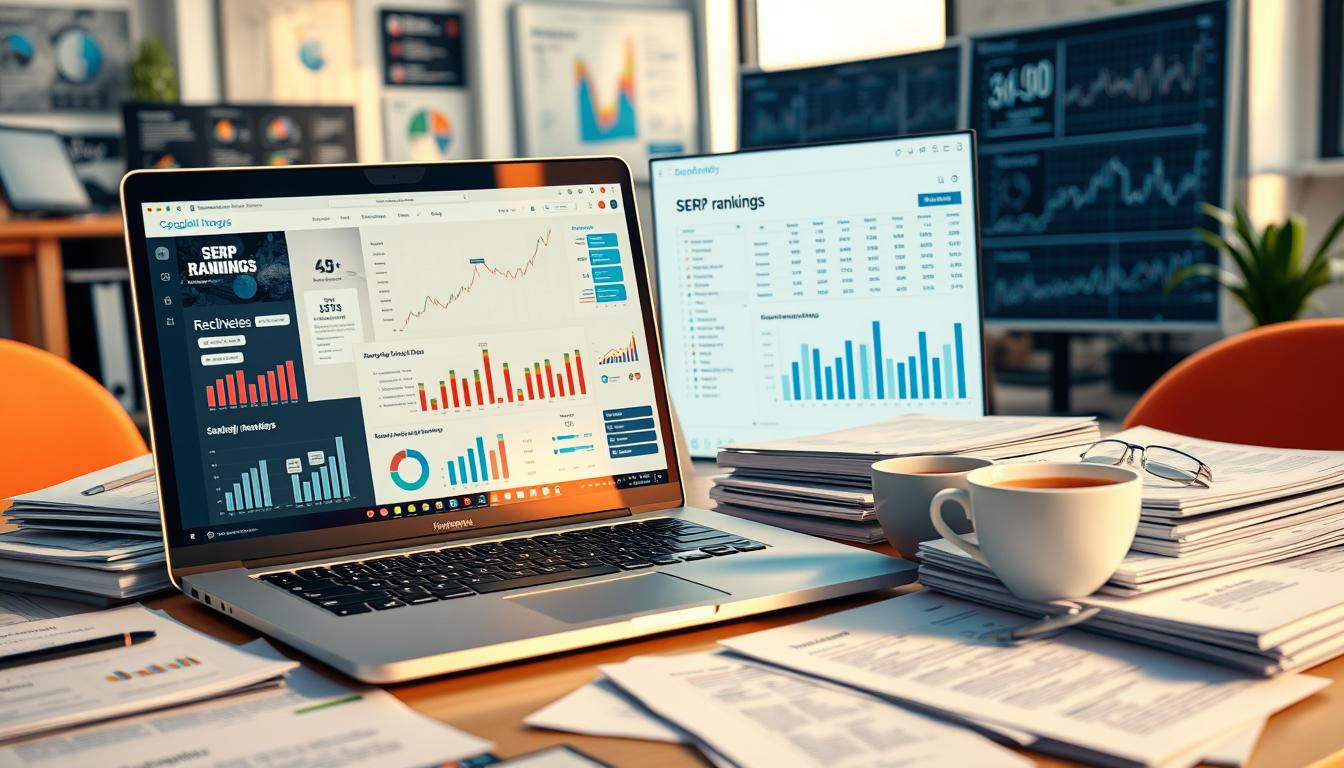In today’s digital landscape, tracking brand mentions is essential for maintaining a competitive edge. Brands often struggle to keep up with conversations happening around them, which can impact their reputation and customer engagement. A Product Mention Tracker helps businesses monitor brand mentions in real-time across various platforms, ensuring they stay informed about customer sentiments and trends.

This tool not only captures mentions from social media but also scans news articles, blogs, and forums for relevant discussions. By leveraging such tracking capabilities, companies can swiftly identify opportunities for feedback and improvements, enhancing the overall customer experience.
As businesses aim to foster meaningful relationships with their audience, understanding how and where they are discussed becomes crucial. Implementing a Product Mention Tracker allows them to proactively engage with their customers, respond to concerns, and celebrate positive feedback effectively.
Understanding Product Mention Tracking

Product mention tracking is essential for brands to stay informed about public perception. By systematically monitoring mentions, brands can gather valuable insights into their reputation and customer sentiment. This section explores the definitions and significance of tracking brand mentions.
Defining Brand Mentions
Brand mentions refer to any instance where a product, service, or company name is referenced online. This can happen across various platforms including social media, blogs, forums, and news sites. Each mention provides a piece of the overall narrative surrounding a brand.
Monitoring tools have emerged to help brands efficiently track these mentions. These tools can provide analytics on who is talking about a product, the sentiment of the comments, and the context of the discussions. This data is crucial for pinpointing customer opinions and identifying trends within the digital landscape.
Importance of Mention Tracking
Tracking product mentions is vital for effective reputation management. This process allows brands to instantly gauge public sentiment. Recognizing both positive and negative mentions empowers brands to respond appropriately and manage their online presence.
In a world where opinions can spread rapidly through social media, proactive mention tracking helps mitigate potential crises. By analyzing trends in mentions, brands can adapt marketing strategies quickly. Additionally, it assists in identifying brand advocates and influencers, enhancing marketing efforts and engagement.
Setting Up Your Mention Tracker

Setting up a Mention Tracker involves selecting the right tool and incorporating AI features to enhance tracking capabilities. With the right approach, effective brand monitoring can be achieved, making it easier to gain insights into online conversations.
Selecting the Right Tool
Choosing the appropriate tool is crucial for monitoring brand mentions effectively. Tools like Mention offer robust features for real-time tracking across various platforms, including social media and news outlets.
Key features to consider include:
- Real-time monitoring: Captures mentions as they happen.
- Sentiment analysis: Helps understand public perception.
- Customizable alerts: Users can set specific keywords and phrases for notifications.
It’s important to compare different options alongside Google Alerts, which provides a more basic monitoring approach. While Google Alerts can notify users of mentions in search results, dedicated tools like Mention provide deeper insights and analytics.
Incorporating AI for Enhanced Tracking
Integrating AI into tracking efforts can significantly improve the monitoring process. AI enhances data analysis by providing insights that would be difficult to obtain manually.
Some AI-driven benefits include:
- Automated sentiment analysis: This feature categorizes mentions based on positive, negative, or neutral tones.
- Trend identification: AI can spot emerging trends and topics related to the brand.
Utilizing social listening techniques in tandem with AI allows brands to understand their audience better and measure engagement effectively. By adopting a combination of these technologies, brands can ensure comprehensive tracking of conversations surrounding their products.
Monitoring Brand Mentions Across Platforms

Effective brand monitoring involves tracking mentions across various platforms. This ensures a comprehensive understanding of audience sentiment and engagement. Monitoring tools can facilitate this across social media, news sites, blogs, and forums, providing real-time insights.
Social Media
Social media platforms like Twitter, Facebook, Instagram, and LinkedIn are vital for monitoring brand mentions. These channels facilitate direct engagement between brands and their audiences. Tools such as Hootsuite enable users to track specific keywords, hashtags, and mentions across these networks.
Real-time tracking helps identify potential crises and gauge customer sentiment quickly. Brands should pay attention to both positive and negative mentions to respond appropriately. Engaging with users who mention the brand can foster loyalty and improve public perception.
News Sites and Blogs
News sites and blogs play a crucial role in brand visibility and reputation. Monitoring these platforms assists in understanding how the brand is portrayed in the media. Tools like Mention provide alerts for new articles or blog posts mentioning the brand, allowing timely responses.
Many consumers rely on online articles for information about brands. Therefore, staying informed about discussions occurring in reputable publications can influence brand strategy. Brands must regularly review their online presence to manage and respond to media narratives effectively.
Forums and Discussion Boards
Forums and discussion boards like Reddit serve as platforms for in-depth discussions about brands. Monitoring these spaces allows brands to capture authentic consumer opinions and experiences. This feedback can be invaluable for understanding customer needs and preferences.
Using brand monitoring tools to track conversations on forums helps identify trends and recurring issues. Engaging in these discussions can humanize the brand and build community. It is essential for brands to listen actively, as these platforms can significantly shape public perception.
Analytics and Reporting

Effective analytics and reporting are crucial for understanding a product’s performance in the marketplace. By focusing on measurable data, businesses can enhance engagement and assess overall reach, while sentiment analysis provides deeper insights into public perception.
Measuring Engagement and Reach
Engagement metrics are essential for evaluating how audiences interact with a product. Key performance indicators (KPIs) include likes, shares, comments, and click-through rates.
Businesses can utilize dashboards to visualize these metrics effectively. Engaging content tends to resonate more with audiences, driving higher interaction rates.
Furthermore, reach indicates how many unique users have encountered brand mentions across various platforms. Tracking this data enables companies to identify successful campaigns and optimize their marketing strategies by focusing on high-performing channels.
Understanding Sentiment Analysis
Sentiment analysis plays a pivotal role in assessing public perception of a product. Through the examination of comments and reviews, sentiment analysis categorizes feedback as positive, negative, or neutral.
This process allows businesses to gain insights into consumer attitudes and identify potential areas for improvement. Advanced tools can automate this analysis, providing real-time reports that highlight trends and shifts in public opinion.
Moreover, understanding sentiment can shape product development and marketing efforts by aligning them with customer expectations. Tailored adjustments based on sentiment insights can bolster brand reputation and foster customer loyalty.
Competitor and Industry Analysis

Understanding competitors and industry dynamics is crucial for effective product mention tracking. By monitoring competitors and identifying industry trends, businesses can refine their strategies and enhance their market positioning.
Tracking Competitors’ Mentions
Tracking competitors’ mentions involves monitoring various channels, including social media, blogs, and news sites. This process allows businesses to gather insights on how their competitors are perceived and discussed online.
Tools like Mention and Talkwalker provide comprehensive tracking capabilities. They enable users to analyze competitor sentiment, frequency of mentions, and key discussion points.
Businesses should focus on the following:
- Sources of Mentions: Identify where mentions occur most frequently.
- Sentiment Analysis: Assess whether mentions are positive, negative, or neutral.
- Impact Events: Note any events that lead to spikes in mentions, such as product launches or controversies.
This data helps in refining marketing strategies and addressing potential threats.
Identifying Industry Trends
Identifying industry trends is essential for keeping up with market changes. Tracking relevant keywords and following industry leaders can reveal valuable insights into current and emerging trends.
Key methods include:
- Keyword Tracking: Monitor popular terms related to the industry. Tools like Google Trends can reveal shifts in consumer interest.
- Competitor Analysis: Analyze competitors’ content strategies and engagement. This can highlight successful tactics and gaps in market offerings.
- Social Listening: Utilize platforms that aggregate discussions around specific topics to gain insights into consumer preferences.
By staying informed, businesses can adapt their strategies, align their offerings with market demands, and capitalize on emerging opportunities.
Integrating Mention Data with Marketing Efforts

Analyzing mention data can significantly enhance marketing initiatives. By using insights from brand mentions, businesses can form strategic partnerships and refine content strategies to better engage their audiences.
Influencer Partnerships
Influencers play a vital role in modern marketing. By identifying influencers who frequently mention the brand, companies can cultivate mutually beneficial partnerships.
Leveraging tools like sentiment analysis can clarify how audiences perceive these influencers’ content. When brands reach out to key influencers, they can create personalized campaigns that resonate with followers.
For example, recognizing positive mentions allows for collaborations that align with the brand’s values. Influencers can amplify brand messages effectively, increasing visibility and credibility while mitigating potential negative perceptions.
Content Strategy and Publication
Integrating mention data into content strategy is essential for relevance. Businesses should analyze trending topics related to their brand mentions.
This insight allows them to craft content that addresses customer interests and pain points. Regularly publishing relevant articles, social media posts, or videos can establish the brand as a thought leader.
Utilizing feedback from sentiment analysis, brands can adjust their tone and topics based on audience reactions. This ensures that content remains engaging and reflects current market demands. By aligning content with consumer sentiment, brands enhance their digital marketing strategy and increase overall engagement.
Mention Tracking Tools and Technologies

A variety of tools are essential for effectively managing and monitoring brand mentions across digital platforms. These tools help businesses customize their alerts and notifications to stay informed about public perceptions and opportunities for engagement.
Overview of Popular Tracking Tools
Several mention tracking tools are widely recognized for their effectiveness. Hootsuite stands out as a comprehensive platform, allowing users to monitor brand mentions, keywords, and trends across multiple social media channels. It offers a user-friendly interface and can streamline social media management.
Awario is another powerful option that provides real-time mentions tracking and sentiment analysis. It enables businesses to identify positive and negative sentiments around their brand, helping to tailor responses and improve engagement.
Talkwalker excels in tracking visual content, with the ability to analyze images alongside text mentions. This feature is crucial in today’s visually driven landscape, allowing brands to manage reputation proactively.
Customizing Alerts and Notifications
Effective mention tracking relies heavily on customized alerts and notifications. Most tools, such as Mention and Awario, allow users to set specific triggers for alerts. These can be based on keyword usage, specific phrases, or even sentiment.
Users can receive notifications instantly via email or within the application, ensuring they stay updated on important conversations. Customization options enable them to filter alerts by relevance and source, which can be particularly beneficial for managing large volumes of data.
Setting alerts for industry keywords or competitor mentions can also provide insights into market trends and opportunities for engagement. This proactive approach enhances the ability to respond quickly and effectively, contributing to a robust online presence.
Optimizing Brand Presence

Enhancing brand presence involves building trust and visibility while managing online reputation. These elements are critical for brand growth and awareness. By focusing on a balanced strategy, a brand can effectively position itself in the market.
Building Trust and Visibility
Trust is a cornerstone of any strong brand image. Consumers are more likely to engage with brands they perceive as reliable and credible. To build trust, brands should prioritize transparency in their communications and consistently deliver on promises.
Visibility can be amplified through various channels, including social media and online content. By actively participating in conversations relevant to their industry, brands increase their chances of being noticed.
Key actions include:
- Engaging with customers: Responding to feedback shows that a brand values its audience.
- Consistent messaging: Clear and cohesive messaging reinforces brand identity.
- Utilizing media mentions: Regular monitoring of mentions helps brands stay informed and proactive.
Improving Online Reputation Management
A proactive approach to online reputation management is essential for maintaining a positive brand image. This includes continuously monitoring brand mentions across various platforms.
Brands should analyze sentiment from mentions to understand public perception. Analyzing both positive and negative feedback allows brands to identify strengths and areas for improvement.
Best practices include:
- Setting up alerts: Use tools to track brand mentions in real-time.
- Addressing negative feedback: Responding promptly can mitigate damage and show commitment to customer satisfaction.
- Highlighting positive reviews: Sharing favorable feedback can enhance credibility and attract new customers.
Effective reputation management not only protects brand image but also drives brand awareness and growth.




